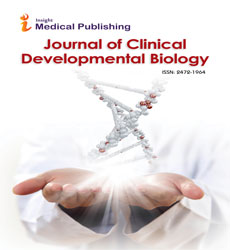Controversies of Neoadjuvant Therapy for Her2-Positive Breast Cancer: Some Latest Perspectives
Xiaoshen Zhang, Shuang Zhou, Huihong Tao, Siyu Zhang, Xiangyu Yao, Xiao Tong and Yaoqin Yang
Xiaoshen Zhang, Shuang Zhou, Huihong Tao, Siyu Zhang, Xiangyu Yao, Xiao Tong and Yaoqin Yang*
Tongji University School of Medicine, Tongji University Cancer Institute, Shanghai 200092, PR China
- *Corresponding Author:
- Yaoqin Yang Tongji
University Cancer Institute, Tongji University School of Medicine, Shanghai 200092, PR China
Tel: 862165983453
E-mail: yaoqiny@163.com
Received date: December 16, 2015; Accepted date: December 17, 2015; Published date: December 24, 2015
Keywords
Her-2 positive breast cancer; Neoadjuvant therapy
The Her-2 positive breast cancer is one of the most prevalent types of breast cancer and it is highly recommended that anti- Her agents should always be a part of the treatment regimen. Although some studies over the treatment of Her-2 positive breast cancer have provided us with solid evident in target therapy, several perspectives should be further discussed and emphasized.
Recent clinical study confirmed that the dual Her2-blockade treatment did not significantly increase the pathologic complete response rates (pCRs) comparing to single Her2 targeting. According to the results of CALGB 40601 trial [1], patients with stage II to III Her2-positive breast cancer underwent tumor biopsy followed by random assignment to paclitaxel plus trastuzumab alone or with the addition of lapatinib for 16 weeks before surgery. Among all the patients, the pCR rate was 56% (95% CI, 47% to 65%) with the combination of paclitaxel, trastuzumab and lapatinib. Whereas, the pCR was 46% (95% CI, 37% to 55%) with paclitaxel plus trastuzumab. Clearly, the results showed no effect of dual therapy in the hormone receptor–positive subset. The reason may lies in the different tumor subtypes, in which they had low expression of proliferation-related genes and high expression of hormone receptor signaling-related genes. However, the deep mechanism concerning the intratumoral heterogeneity and tumor reprogramming cannot be fully explained. Thus, more investigations are needed to evaluate dual versus single Her-2 targeting within individual subtypes.
As for targeting therapy medications, such as trastuzumab or pertuzumab, some adverse events were proved to be ethnicrelated and do need more attention in clinical research, according to the phase III CLEOPATRA trial conducted by Sandra M. Swain et al. [2]. Data from the trial showed that patients with Her2- positive metastatic breast cancer from Asia underwent serious toxicity adverse events with pertuzumab than patients from other regions. In this trial, Patients were recruited from Europe (37.9%), Asia (31.3%), North America (16.7%), and South America (14.1%). The experimental arms, treated with pertuzumab, had an incidence of 26% in the Asia patients with febrile neutropenia, which could also result in higher incidence of mucosal inflammation and diarrhea, while the incidence was 10% or less in each arm in patients from other region. The authors found more than half of the patients from Asian had a lower weight, body surface area and body mass index than other region, which may be relevant to the high toxicity rate. It should be noted that the ethnic differences is an important issue in clinical research, and further investigations are necessary to figure out a more adaptable treatment for patients with different ethnicities and regions.
What is also worth mentioning that the cardiotoxity of trastuzumab remains a controversy [3]. Some studies had provided solid fact that trastuzumab was safe to cardiac system [4], but the negative side held the view that trastuzumab had an irreversible cardiac damage on patients, which was also credible in research data [5]. Consequently, some double-blind, multi-center studies are needed to focus on the adverse events of trastuzumab in order to clarify the underlying drug-induced adverse events.
In addition, the cost-effectiveness is also an important component for economic evaluation in future treatment. In a study conducted by Nicole Meyer et al. [6], the results presents an average cost of $11,107 per patient/month in Her2-target recipients in US, indicating Her2-target agent recipients have high level of healthcare utilization and costs. And the cost of therapy can limit patient access to trastuzumab in areas that financial resources are limited for treatment. What treatment protocol we should choose to utilize the cost without compromising the efficacy? More studies are needed to evaluate the cost effectiveness of target treatment agent in different region with a diverse horizon.
Acknowledgements
This study is funded by National Science Innovation Training Project. (No.201510247129).
References
- Carey LA, Berry DA, Cirrincione CT (2015) Molecular Heterogeneity and Response toNeoadjuvant Human EpidermalGrowth Factor Receptor 2 Targeting in CALGB 40601, a Randomized Phase III Trial of Paclitaxel Plus TrastuzumabWithorWithoutLapatinib.J ClinOncol 33.
- Swain SM, Im YH, Im SA (2014). Safety profile of PertuzumabwithTrastuzumab and Docetaxel in patientsfrom Asia with human epidermalgrowth factor receptor 2-positive metastatic breast cancer: results from the phase III trial CLEOPATRA. Oncologist 19: 693-701.
- 3.Zhang X, Yang Y (2015) DoesTrastuzumab Cause Cardiotoxicity in the Treatment of Patients with Breast Cancer? J Am SocEchocardiogr 28: 1129.
- Valachis A,Nearchou A,PolyzosNP (2013)Cardiac toxicity in breast cancer patients treated with dual HER2 blockade. IntJ Cancer 133:2245-2252.
- Tan TC, Bouras S, Sawaya H (2015) Time trends of left ventricular ejection fraction and myocardial deformation indices in a cohort of women with breast cancertreatedwithanthracyclines, taxanes, and trastuzumab. J Am SocEchocardiogr28:509-514.
- Meyer N, Hao Y, Song X (2014) Healthcare Resource Use and Expenditures among Metastatic Breast Cancer Patients Treated with HER2-Targeted Agents. Int J Breast Cancer 475171.
Open Access Journals
- Aquaculture & Veterinary Science
- Chemistry & Chemical Sciences
- Clinical Sciences
- Engineering
- General Science
- Genetics & Molecular Biology
- Health Care & Nursing
- Immunology & Microbiology
- Materials Science
- Mathematics & Physics
- Medical Sciences
- Neurology & Psychiatry
- Oncology & Cancer Science
- Pharmaceutical Sciences
